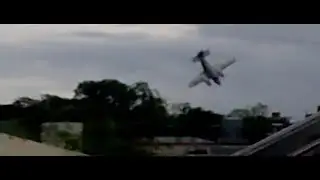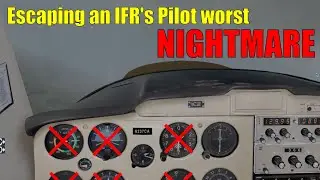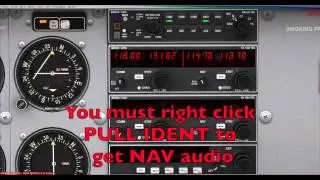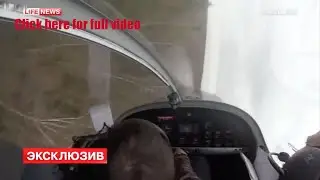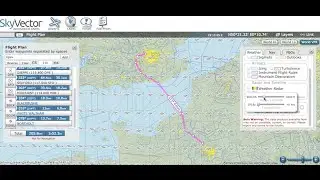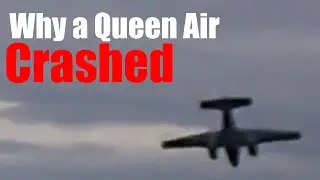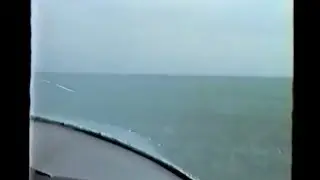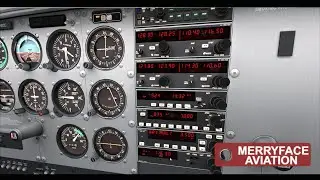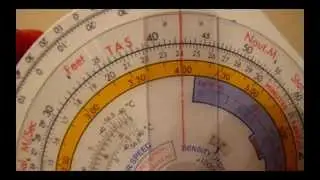Aviation Ground School: Traffic Patterns
NOTICE
This video does not replace any form of official training and is not recognized by any authority as a training aid. Use the information presented at your own discretion.
Transcript
Welcome to a Merryface Ground School Tutorial. Today we'll have a look at some of the more important aspects of the traffic pattern.
Entering and operating in the traffic pattern is the busiest part of the flight, therefore it's important to know it inside out.
This very professionally done vector drawing shows the five legs of the traffic pattern.
We have the initial climb, mostly known as the departure leg, the base leg, the downwind leg, the crosswind leg and the final approach.
Note that if an aircraft joins on the other side of the pattern in the opposite direction of the downwind, it is in the upwind leg.
The active runway is the one that will make the final approach and landing as much into the wind as possible.
The headwind will result in a lower groundspeed, giving the aircraft a shorter landing distance and lower touch-down groundspeed.
Notice the wind sock on the bottom right.
If we look at the runway number, it looks like the wind is coming from east, therefore runway 09 is active.
The traffic pattern is done by making turns to the left whenever possible, as shown here.
This is because the pilot in command of a fixed wing aircraft usually sits on the left, giving him or her better visibility in the turns.
However, there are times when this is not possible due to terrain, ground obstacles, restricted airspace or other hostile sources.
In this case the traffic pattern will be done with right turns.
Air traffic control will tell you, "left" or "right" traffic. If it's left traffic, turn left, right traffic, turn right.
Can't be easier can it?
The following bullet points say it all.
Whenever possible, the traffic pattern takes place at 1000ft above ground level, or AGL. That means that if you were to set your altimeter to QFE, it would read 1000ft.
We will discuss altimeter pressure settings in another lesson.
depending on the size of the airfield and of the airspeed of the aircraft being flown, the descent typically starts somewhere between halfway down the downwind leg and the beginning of the base leg.
It's all about anticipation.
Finally, some airfields will have different assigned traffic pattern altitudes.
This is usually due to conflicting airspace above the airfield.
This is a segment of the visual approach chart of LFPZ, in the outskirts of Paris.
We won't look at the chart itself in detail.
For now look at the end of the downwind leg you'll see two altitude values
The one we're interested in right now is the one in the brackets.
This is the AGL altitude of the traffic pattern and as you might have noticed, it's at 800 feet, not 1000ft.
The reason behind this is that the Paris Class A airspace starts at 1200ft above the airfield.
The 300 feet margin is there to give a margin between aircraft in the pattern and aircraft arriving overhead.
Some airfields are in difficult terrain, discarding any possibility of having a normal traffic pattern.
Irregular traffic patterns typically exist at airfields in mountainous terrain.
Here is the infamous Courchevel with an unforgiving final approach.
As you can see, the pattern is actually triangular, allowing a slightly faster traffic flow.
Airports such as this one make a go around procedure impossible due to a combination of the high altitude induced low performance and
rising terrain on the other side of the runway.
These airports usually have an abort point at the beginning of the final approach.
It is due to this kind of complex procedures that specialised mountain flying training is strongly recommended for these operations.
That's it for now.
A quick summary here of what we looked at today.
If you want revision materials for the traffic pattern, visit www.merryfaceaviation.com to download these slides and the transcript of this lesson.
If you enjoyed this hit the subscribe button and stay tuned for the next tutorial.
Don't forget to check out the Facebook page, my blog, and my main channel, links for which are in the description box.
Thanks for watching, and happy flying.
Merryface Aviation is a Youtube Channel with various aviation related videos.
The main themes on this channel are:
Flight Training
Plane Spotting
Aviation Related Tutorials
Mayday Talk
Answers to general aviation question
The main theme of this channel is Mayday Talk.
This channel is still in development as I'm in the middle of studying two courses (including my personal pilot training) and as for now there is no regular uploading schedule.
Website: http://merryfaceaviation.com/
Blog: http://thewebpilot.blogspot.co.uk/
Facebook: / merryfaceaviation
#Aviation
Watch video Aviation Ground School: Traffic Patterns online, duration hours minute second in high quality that is uploaded to the channel MerryfaceAviation 11 May 2013. Share the link to the video on social media so that your subscribers and friends will also watch this video. This video clip has been viewed 8,487 times and liked it 32 visitors.




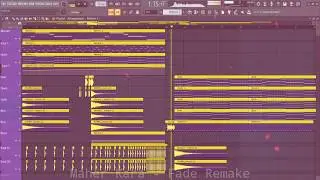
![[PMV] Different View of Reality (magyar felirat)](https://images.reviewsvideo.ru/videos/ejb0rucFCO4)


